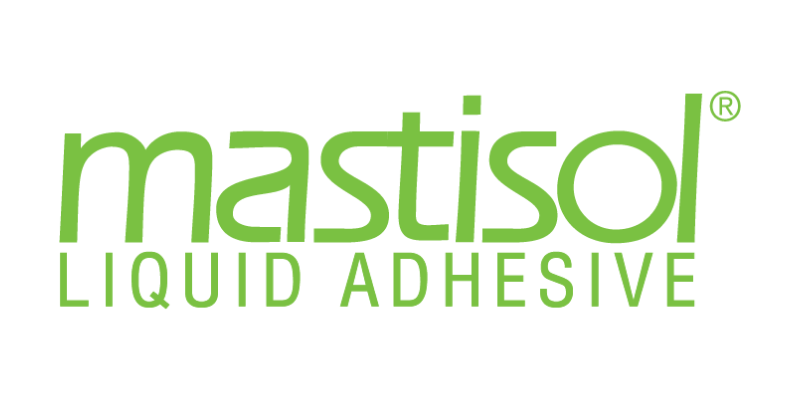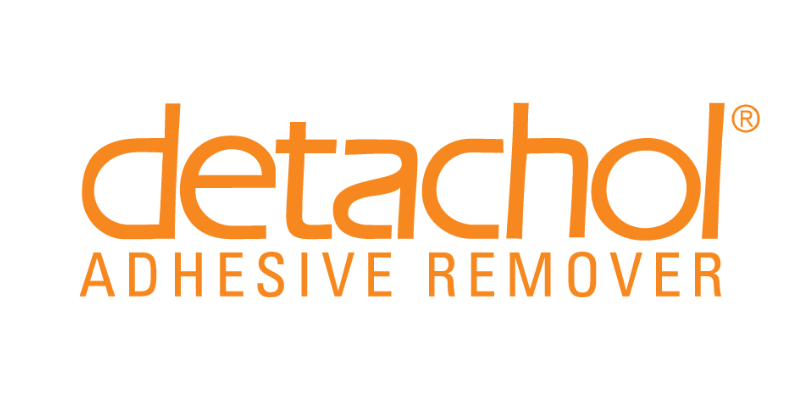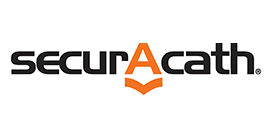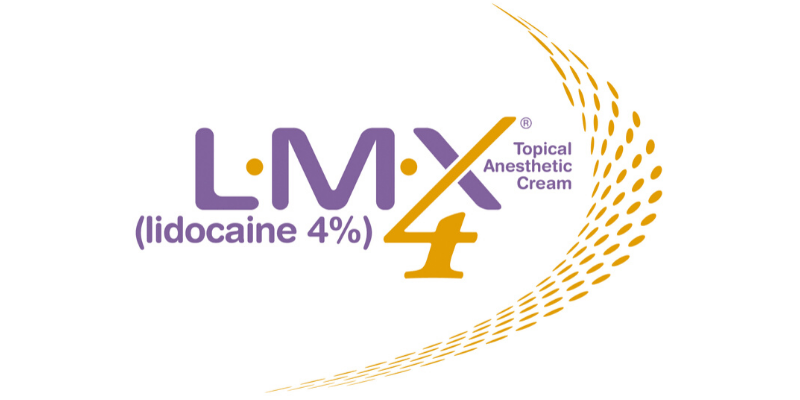Frequently Asked Questions
- What is Mastisol?
- What are the unique benefits of Mastisol?
- For what Applications is Mastisol Frequently Used?
- What are the Ingredients of Mastisol?
- How is Mastisol applied?
- Is Mastisol compatible with chlorhexidine gluconate (CHG) on the skin?
- How does Mastisol compare to Benzoin?
- How is Mastisol supplied?
- What is the expiration date of Mastisol?
- Can Mastisol be purchased in Canada?
- Where can individual customers purchase Mastisol?
What is Mastisol?
Mastisol is a liquid medical adhesive used to secure dressings, tapes, and certain medical devices. Mastisol ensures the integrity of these tapes and devices over an extended period of time.
What are the unique benefits of Mastisol?
Unique benefits include:
Increase Adhesive Power
Reduce likelihood of dressing displacement.[1]
Improve Patient Safety
Minimize risk of infection by creating a lasting occlusive barrier.[2,4]
Versatile Application
Clinically proven to improve the adhesive power of a variety of adhesive tapes and dressings.[3]
Enhance Efficiency
Reduce time associated with unplanned dressing changes.
For what Applications is Mastisol Frequently Used?
Please find a list of hospital departments in which Mastisol is frequently used:
Operating Room
Wound Closure Strip Securement, ET Tube Securement, Sterile Field Drapes
Intensive Care Units
Vascular Access Device Dressing Securement, ET Tube & NG Tube Securement, Fecal Management Bag & Foley Anchor Securement
Hematology/Oncology
Vascular Access Device Dressing Securement, Wound Dressing Securement
Emergency Room
Wound Closure Strip Securement, Wound Dressing Securement, Chest Tube Securement
Pediatrics
Vascular Access Device Dressing Securement, Wound Dressing Securement, ET Tube & NG Tube Securement
Respiratory Therapy
ET Tube & NG Tube Securement
Wound Ostomy
Ostomy Appliance Securement, Wound Dressing Securement, NPWT Drape Securement
Vascular Access Team
Vascular Access Device Dressing Securement
If you have a specific question about a specific device, please contact Eloquest customer service at 1.877.433.7626
What are the ingredients of Mastisol?
The ingredients in Mastisol are: Gum Mastic, Styrax, Alcohol (SDA-23), and Methyl Salicylate
How is Mastisol applied?
Saturate a clean piece of gauze, cotton ball or cotton-tip applicator with Mastisol. Taking care to not come into contact with non-intact skin (i.e. cut, suture-area), apply a thin layer of Mastisol to the entire area of the skin that will come in contact with the adhesive part of the dressing.
To ensure maximum adhesion, it is better to make the Mastisol application area slightly larger than your dressing, rather than smaller. NOTE: Applying a thick coating of Mastisol does not make the dressing adhere better or improve dressing securement times. It could in fact lessen Mastisol’s effectiveness. It is very important that you allow Mastisol to dry (~20 – 30 seconds) before securing the dressing. Once Mastisol has dried, place the dressing so that the adhesive edges come into contact with the area where Mastisol has been applied to the skin.
Is Mastisol compatible with chlorhexidine gluconate (CHG) on the skin?
Yes. Mastisol is compatible with CHG on the skin. Use of Mastisol does not impact the antiseptic effectiveness of CHG.[2]
How does Mastisol compare to Benzoin?
Clinical data demonstrates that the adhesive power of Mastisol is stronger than Tincture of Benzoin. Mastisol also has a lower incidence of postoperative contact dermatitis and subsequent skin discoloration.[1]
How is Mastisol supplied?
| Description | Unit | HRI# |
| Mastisol Vials | 48 x 2/3 Ml | 0496-0523-48 |
| Mastisol Unit Dose | 15mL bottle with plug | 0496-0523-15 |
| Mastisol Spray Pump | 15mL bottle with pump | 0496-0523-16 |
| Mastisol Dispenser Cap | 2oz bottle | 0496-0523-06 |
What is the expiration date of Mastisol?
To locate the lot number and expiration date for vials – it is stamped on the box that the vials come in. If you are unable to locate the box, you can also find this information on the plastic packaging that the vial is contained in. To locate the lot# and expiration date – hold the vial in your hand with the tyvek label facing away from you (You should be looking at the vial in the packaging). Hold down the top of the label away from the plastic packaging, you should see two lines – the first line is the lot# and the second line is the expiration date. If you have difficulty seeing this information, we find doing this in a well-light area or just under a light helps with viewing. If your product sku does not contain an expiration date, than it was produced prior to our implementation of expiration dating.
Per their product classification, Detachol and Mastisol are not required to list a product expiration date. However, due to increased requests from our customers, we voluntarily started including a 5-year expiration date from the date of manufacture for all Detachol and Mastisol product skus produced, starting in March 2010.
Can Mastisol be purchased in Canada?
To purchase Mastisol Liquid Adhesive in Canada, please contact:
For all other international inquiries please contact:
Where can individual customers purchase Mastisol?
To purchase Mastisol Liquid Adhesive for individual use, please visit:
or call 1-800-646-4633
- What is Detachol?
- What are the unique benefits of Detachol?
- For what Applications is Detachol Frequently Used?
- What are the Ingredients of Detachol?
- How is Detachol applied?
- How long is Detachol usable after opening?
- Is Detachol compatible with chlorhexidine gluconate (CHG) on the skin?
- How does Detachol compare to other adhesive removers?
- How is Detachol supplied?
- What is the expiration date of Detachol?
- Does Detachol contain latex?
- Can Detachol be purchased in Canada?
- Where can individual customers purchase Detachol?
What is Detachol?
Detachol is a non-irritating adhesive remover used to aid in the removal of dressings, tapes, and most sticky residue from the skin and other surfaces.
What are the unique benefits of Detachol?
Unique benefits include:
Improve Patient Comfort
Gentle product reduces patient pain & discomfort during adhesive removal
Improve Patient Safety
Reduces risk of medical adhesive-related skin injury (MARSI)
Reduce Colonization Risk
Completely removes adhesive residue which may harbor bacteria[1,2]
Enhance Efficiency
Convenient, precise vial applicator saves healthcare professional time
For what Applications is Detachol Frequently Used?
Please find a list of hospital departments in which Detachol is frequently used:
Pediatrics
Vascular Access Device Dressing, Engineered Stabilization Device, Wound Dressing, ET Tube & NG Tube Removal
Hematology/Oncology
Vascular Access Device Dressing & Wound Dressing Removal
Intensive Care Units
Vascular Access Device Dressing, Engineered Stabilization Device, Wound Dressing, ET Tube & NG Tube Removal
Emergency Room
Dressing Changes
Operating Room
Tape and Adhesive Residue Removal
Wound Ostomy
Ostomy Appliance, Wound Dressing & NPWT Drape Removal
Respiratory Therapy
Respiratory Therapy
Vascular Access
Vascular Access Device Dressing & Engineered Stabilization Device Removal
If you have a specific question about a specific device, please contact Eloquest customer service at 1.877.433.7626
What are the Ingredients of Detachol?
Detachol Adhesive Remover contains Specially Refined Paraffin Hydrocarbons
How is Detachol applied?
Saturate a clean piece of gauze, cotton ball or cotton-tip applicator with Detachol. While gently lifting a corner of the attached dressing, with a gentle sweeping back and forth motion against the skin apply the Detachol-soaked gauze/cotton to the part of the skin that comes in contact with the adhesive backing of the dressing.
Continue to gently pull up on the dressing while sweeping the Detachol-soaked gauze/cotton against the skin/adhesive part of the bandage until the dressing is completely removed from the skin. If your applicator needs to be refreshed before your dressing is removed, do not re-use your gauze/cotton ball/tip.
Always use a clean piece of gauze or cotton ball/tip in order to avoid contaminating the Detachol liquid in the bottle. After removal of the bandage clean any excess Detachol with soap and water.
How long is Detachol usable after opening?
Detachol does not degrade after opening, however exposure to air may cause it to evaporate over time. Keep product firmly sealed when not in use.
Is Detachol compatible with chlorhexidine gluconate (CHG) on the skin?
Yes. Detachol is compatible with CHG on the skin. Use of Detachol does not impact the antiseptic effectiveness of CHG.[3]
How does Detachol compare to other adhesive removers?
Detachol is non-irritating to patients’ skin. It will not degrade nurses’ gloves like other alcohol-based adhesive removers. It comes in a variety of convenient sizes, including single-use vial packaging. The vial applicator effectively distributes the
remover to the desired areas and underneath dressings and devices gently removing adhesive products from the skin. The safety and efficacy of Detachol has been well documented and it should be considered to reduce risk of skin injury.
How is Detachol supplied?
Detachol is available in several configurations:
| Description | Unit | HRI# |
| Detachol Vials | 48 x 2/3mL | 0496-0513-48 |
| Detachol Vials | 24 x 1.6mL | 0496-0513-24 |
| Detachol Unit Dose | 15mL bottle with plug | 0496-0513-15 |
| Detachol Dispenser Cap | 2oz bottle | 0496-0513-06 |
| Detachol Dispenser Cap | 4oz bottle | 0496-0513-04 |
| Detachol Dispenser Cap | 8oz bottle | 0496-0513-02 |
What is the expiration date of Detachol?
To locate the lot number and expiration date for vials – it is stamped on the box that the vials come in. If you are unable to locate the box, you can also find this information on the plastic packaging that the vial is contained in. To locate the lot# and expiration date – hold the vial in your hand with the tyvek label facing away from you (You should be looking at the vial in the packaging). Hold down the top of the label away from the plastic packaging, you should see two lines – the first line is the lot# and the second line is the expiration date. If you have difficulty seeing this information, we find doing this in a well-light area or just under a light helps with viewing. If your product sku does not contain an expiration date, than it was produced prior to our implementation of expiration dating.
Per their product classification, Detachol and Mastisol are not required to list a product expiration date. However, due to increased requests from our customers, we voluntarily started including a 5-year expiration date from the date of manufacture for all Detachol and Mastisol product skus produced, starting in March 2010.
Does Detachol contain latex?
Detachol Adhesive Remover is not made with natural rubber latex.
Can Detachol be purchased in Canada?
To purchase Detachol Adhesive Remover in Canada, please contact:
For all other international inquiries please contact:
Where can individual customers purchase Detachol?
To purchase Detachol Adhesive Remover for individual use, please visit:
or call 1-800-646-4633
- What is the SecurAcath made of?
- What catheters can SecurAcath be used on?
- How long can the SecurAcath remain in place?
- Do the securement feet beneath the skin hurt or cause discomfort to the patient?
- Can the securement feet damage the catheter?
- What happens if the catheter and SecurAcath are accidentally pulled out?
- Can the SecurAcath be used on patients with frail skin?
- Can the SecurAcath be removed before the catheter is removed?
- Does the SecurAcath increase risk for air embolism during removal?
- Can a patient have an MRI with the SecurAcath?
- Can I use the SecurAcath on a patient with nickel sensitivity?
- Can I use the antimicrobial or hemostatic protective disc with the SecurAcath?
- Can I use Tegaderm CHG with the SecurAcath?
- Can I use tissue adhesive (cyanoacrylate, glue) with SecurAcath?
- How do I disinfect the site?
- Does the SecurAcath affect the risk of catheter-related infection?
- What if blood gets into the SecurAcath device?
- Does SecurAcath cause bleeding at the insertion site?
- Can you use SecurAcath in neonates and pediatric patients?
- Can you place SecurAcath in a patient with shallow veins (<1cm) or cachectic patients?
- Do we need to adjust the size of SecurAcath we use to accommodate the taper on some catheters?
What is the SecurAcath made of?
The flexible securement feet are made of Nitinol which is a shape-memory alloy of nickel and titanium. Nitinol is used in several medical devices including self-expanding stents and IVC filters. The plastic is polypropylene and elastomer. The SecurAcath is not made with natural rubber latex.
What catheters can SecurAcath be used on?
SecurAcath has successfully been utilized on a variety of percutaneous catheters. Indications for use vary by geography. Refer to the IFU for your area. SecurAcath is available in eight sizes from 3-12 Fr.
How long can the SecurAcath remain in place?
The SecurAcath can remain in place for the entire catheter dwell time. The longest known SecurAcath dwell has been on a tunneled catheter secured for over four years.
Do the securement feet beneath the skin hurt or cause discomfort to the patient?
No. When properly inserted in the subcutaneous tissue beneath the skin, the patient should not experience any discomfort. Pain receptor nerves are mainly located in the dermis, not in the subcutaneous tissue. Patients in a SecurAcath clinical study were asked to rate their pain on a scale of 0-10 (zero being no pain). The average score while device is indwelling was 0.8, and on removal was 1.51. The data supports that the device is comfortable for patients. Proper positioning of the device on the skin and dressing application is key to avoid pain or discomfort. The SecurAcath should not be twisted, rotated, or repositioned from the original placement position. The dressing should not be stretched tightly over the device and insertion site.
Can the securement feet damage the catheter?
No. The securement feet are blunt, rounded, polished and flexible. There are no sharp edges on the SecurAcath device. Extensive testing has been performed to demonstrate the securement feet do not cause damage to the catheter.
What happens if the catheter and SecurAcath are accidentally pulled out?
The SecurAcath feet will pull out of the skin without causing damage to the tissue. The securement feet are rigid enough to hold the device in place but also flexible enough to not cause skin damage if extreme tension or pulling on the device occurs. The feet will come out through the existing skin puncture and will not create trauma even when the skin is frail. If there is extreme tension on the catheter, the catheter outer diameter may change due to stretching and may lead to slipping in the device. This can be prevented with proper dressing application and dressing management and ensuring the catheter suture wings are under the dressing. Proper dressing management and appropriate positioning of SecurAcath have demonstrated it is possible to reduce dislodgments to 0%2.
Can the SecurAcath be used on patients with frail skin?
Yes. The SecurAcath has been used on a variety of skin conditions including the elderly, neonates, burn patients and chronic steroid patients and has performed very well. As indicated in the 2021 INS Standards of Practice, SecurAcath may be a good option for patients with compromised skin integrity3.
Can the SecurAcath be removed before the catheter is removed?
Yes. It is possible to remove the device while the catheter is still in place. However, it is easier to remove the device after the catheter is removed. Please see our website for removal videos.
Does the SecurAcath increase risk for air embolism during removal?
No. The SecurAcath does not increase the chance for an air embolism when removing the device. Standard practice should be followed when removing the catheter. Hold pressure at the insertion site as catheter is removed and then maintain pressure until hemostasis is achieved. Once hemostasis is achieved, the SecurAcath can be removed. Please see our website for removal videos.
Can a patient have an MRI with the SecurAcath?
Yes. SecurAcath is compatible with MRI up to 3 Tesla (3T). Current MRI terminology for medical devices are: safe, conditional or unsafe. The SecurAcath has been tested and poses no hazards in typical MRI conditions. Additional details can be found in the Instructions for Use.
Can I use the SecurAcath on a patient with nickel sensitivity?
The SecurAcath Instructions for Use include a warning not to use the device in patients with a known nickel allergy. An estimated 5-10% of the population is said to be allergic to nickel4. The allergic response usually presents as contact dermatitis caused by exposed nickel contained in the metal of some jewelry. If a patient reports they have a nickel allergy, it is important to understand the difference between Nitinol and other nickel containing alloys. The Nitinol in the SecurAcath undergoes a process called electropolishing during manufacturing. When electropolished, Nitinol forms a stable protective layer known as passivated nitinol. Electropolished nitinol has excellent biocompatibility, similar to that of stainless steel, which also contains nickel. Unpassivated metal alloys, like those used in inexpensive jewelry, have free nickel ions exposed on the surface, which can cause a hypersensitivity response on the skin. Consider the risks and consequences of skin adhesive reactions, device migration, catheter tip malposition, and dislodgement versus a potential reaction to nickel. Be aware the SecurAcath device can be removed if skin sensitivity or reaction is observed during dwell time.
Can I use the antimicrobial or hemostatic protective disc with the SecurAcath?
Yes, the design of SecurAcath allows space for the disk products to fit 360 degrees around the insertion site.
Can I use Tegaderm CHG with the SecurAcath?
Yes, Tegaderm CHG can be used with the SecurAcath. SecurAcath is compatible with all types of adhesive dressings used for vascular access devices and catheters.
Can I use tissue adhesive (cyanoacrylate, glue) with SecurAcath?
Yes, we recommend applying the glue while holding the device in the upright position with slight tension, apply the glue per instructions for use, let dry, then lay it down.
How do I disinfect the site?
The SecurAcath allows for 360-degree cleaning of the skin and we recommend you use your institution’s preferred skin antiseptic, including but not limited to CHG/Isopropyl Alcohol, Betadine, etc.
Does the SecurAcath affect the risk of catheter-related infection?
A recently published study out of the University of Arkansas for Medical Sciences showed the SecurAcath reduces the risk of CLABSI compared to an adhesive securement device. The study examined 7,776 PICC cases over a 4-year period. The analysis showed the adhesive securement device had a 288% increase in risk of CLABSI compared to SecurAcath5. The author postulates that improved catheter stability and site cleaning attributed to the significant improvement in CLABSI risk
What if blood gets into the SecurAcath device?
The SecurAcath has been designed to minimize the ability for blood to get into the device with a seal around the edge of the device. If blood is visible on the SecurAcath, use sterile saline soaked gauze to clean the blood off the device. Saline dissolves blood better than an alcohol-based cleaning solution. Once the visible blood is removed, disinfect using standard skin antiseptic solutions such as 2% CHG/70% IPA. We have performed bench testing demonstrating that even if blood gets inside the device, the skin antiseptic agent, being less viscous than blood, will go wherever the blood goes to effectively disinfect the device.
Does SecurAcath cause bleeding at the insertion site?
SecurAcath is atraumatic and does not puncture or breach the skin or vessels to cause bleeding. It rests in the same puncture site as the catheter and the feet deploy in the subcutaneous tissue just beneath the dermis. Exit site bleeding that is observed in certain patient populations can be easily managed with pressure and several tools already in your hospitals like cyanoacrylate tissue adhesive or hemostatic dressings.
Can you use SecurAcath in neonates and pediatric patients?
Yes. Several studies have demonstrated that SecurAcath performs very well for securing percutaneous devices in these populations. 6,7,8,9,10
Can you place SecurAcath in a patient with shallow veins (<1cm) or cachectic patients?
Yes, the SecurAcath has been used successfully in a wide variety of patients, including those with shallow veins and very low body fat. The securement feet are small and blunt and will deploy in the subcutaneous space between the dermis and the vein even when there is less subcutaneous tissue than normal.
Do we need to adjust the size of SecurAcath we use to accommodate the taper on some catheters?
SecurAcath is designed to work on both tapered and non-tapered catheters. There is no need to adjust the SecurAcath size to accommodate the larger diameter on the taper. Select the appropriate size SecurAcath device to match the labelled catheter diameter. If the catheter is labeled with a half French size, use the closest smaller size SecurAcath, e.g. with 8.5F catheter, use 8F SecurAcath.
- What is the ideal LMX4 Topical Anesthetic Cream storage temperature?
- Does LMX4 Topical Anesthetic Cream contain latex?
What is the ideal LMX4 Topical Anesthetic Cream storage temperature?
LMX4 can be stored at temperatures between 59 and 86 degrees F (controlled room temperature). The ideal temperature to store LMX4 is 77 degrees F.
Does LMX4 Topical Anesthetic Cream contain latex?
L.M.X.4 is not made with natural rubber latex.
Mastisol FAQ References
1. Lesesne, CB Post-Operative Use of Wound Adhesives: Gum Mastic Versus Benzoin, USP. J Dermatol Surg Oncol 1992;18:990.
2. Timsit J-F, et al. Dressing disruption is a major risk factor for catheter related infections. Crit Care Med. 2012;40(6):707-14.
3. Patel N, Smith CE, Pinchak AC, Hancock, DE. The influence of tape type and skin preparation on the force required to dislodge angiocatheters. Can J Anaesth. 1994;41:1738-41.
4. Ryder, M; Duley, C; Evaluation of compatibility of gum mastic liquid adhesive and liquid adhesive remover with an alcoholic chlorhexadine skin preparation. J Infus Nurse. 2016;40(4):245-252.
Detachol FAQ References
1. Berkowitz M, Lee W-S, Pazin GJ, Yee RB, Ho M. Adhesive tape: potential source of nosocomial bacteria. Appl Microbiol. 1974;28:651-54.
2. Redelmeier DA, Livesley NJ. Adhesive tape and intravascularcatheter-associated infections. J Gen Intern Med. 1999;14:373-5.
3. Ryder, M; Duley, C; Evaluation of compatibility of gum mastic liquid adhesive and liquid adhesive remover with an alcoholic chlorhexidine gluconate skin preparation. J Infus Nurse. 2016; 40(4):245-252.
SecurAcath FAQ References
1. Egan GM, Siskin GP, Weinmann R, et al. A prospective postmarket study to evaluate the safety and efficacy of a new peripherally inserted central catheter stabilization system. J Infus Nurs 2013;36:181–8. DOI: 10.1097/NAN.0b013e3182893690
2. McParlan D, Edgar L, Gault M, Gillespie S, Menelly R, Reid M. Intravascular catheter migration: A cross-sectional and health-economic comparison of adhesive and subcutaneous engineered stabilisation devices for intravascular device securement. The Journal of Vascular Access. 2020;21(1):33-38. doi:10.1177/1129729819851059
3. Gorski LA, Hadaway L, Hagle ME, et al. Infusion therapy standards of practice. J Infus Nurs. 2021;44(suppl 1):S1-S224. doi:10.1097/NAN.0000000000000396
4. http://www.nature.com/news/2010/100815/full/news.2010.407.html
5. https://doi.org/10.1016/j.ajic.2020.06.178
6. Rodriguez Perez C, Romitti MG, Pezzotti E, D’Andrea V, Pezza L, Pittiruti M. Subcutaneously Anchored Sutureless Device for Securement of Chest Tubes in Neonates with Pleural Effusion: Three Case Reports. Case Rep Pediatr. 2020 Mar 10;2020:7480483. doi: 10.1155/2020/7480483. PMID: 32231838; PMCID: PMC7086429.
7. Cellini, et al. Guidelines of the Italian Association of Pediatric Hematology and Oncology for the management of the central venous access devices in pediatric patients with onco-hematological disease, The Journal of Vascular Access, Nov 2020
8. Barone, et al, Centrally inserted central catheters in preterm neonates with weight below 1500 g by ultrasound-guided access to the brachio-cephalic vein, Journal of Vascular Access, June 2020
9. Frassanito, et al, Securing CSF catheters to the skin: from sutures and bolt system to subcutaneous anchoring device towards zero complications, Child’s Nervous System, June 2020
10. Fitzsimmons, et al, An observational study of the securement of central venous access devices with a subcutaneous anchor device in a paediatric population at a tertiary level hospital, Journal of Vascular Access, May 2020





